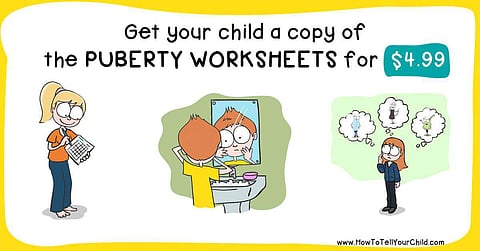

There are many people who aren’t comfortable talking about puberty with their teenage kids, let alone striking up a conversation about the birds and the bees. The changes teenagers go through during puberty, how they need to take care of their body — these are necessary topics in times like these, but are not easily touched upon by parents, believes Deepa Kumar. This entrepreneur and author, who has experienced such circumstances herself and has seen it happen around her several times, says, "We should not worry or carry this baggage of not being able to communicate about such topics with children. That's why I decided to bring out a couple of books that talk about the signs of puberty in both boys and girls. These books can help parents start a serious conversation with their children."
Deepa's books How To Tell Your Child - Mr P’s Guide for Boys and How To Tell Your Child - Ms P's Guide for Girls are creatively designed and, at the same time, convey information about the changes that girls and boys undergo during puberty. She says, "If you look at the ancient temples in India, their stone carvings convey themes of puberty and the changes that the human body goes through, quite openly. They are rather graphic in nature and educate people, after all, there is no shying away from reality. It is time parents have open conversations about tough topics with their children too."
So, which topics do you think Deepa has covered in these two books? In Mr P’s Guide for Boys, she explains about the pituitary gland located at the base of the brain and its role in producing hormones that bring about changes in the male body. Deepa explains how hands, arms, feet and legs grow faster and soon, the rest of the body catches up and becomes proportional. Then, there is the topic 'Volcanoes on the Face' that explains about oil glands on the face and hair growth. Not just explanations, Deepa has paired the content with beautiful illustrations on what you can do to keep your body clean and odour-free. She even goes on to explain the difference between wet shave and dry shave and shares shaving tips to avoid cuts. Cracking of the voice, the science behind it and the stages of development of private body parts are also covered in this book. There are also final tips and a few interesting FAQs which explain the science behind almost everything. It subtly conveys to children not to worry or feel anxious as everyone undergoes this phase.
Similarly, Deepa’s other book Ms P's Guide for Girls starts with the poem Knick Knack Knock that explains about feeling weird and odd while going through puberty. Then it heads to more serious topics that leads the reader through the journey of puberty, like sweat, hair growth, development of breasts, first period, cramps and so on. What's special about this book, beyond its very existence, is that it speaks about menstrual hygiene, some DOs and DON'Ts, myths around menstruation and more. She also explains about using a cloth pad, menstrual cups and other feminine hygiene products, and the steps to use them and keep themselves clean. And after reading this detailed book, if the girls still have doubts, they can check out the FAQs given about puberty and how menstruation is a natural cycle.
Deepa says, "I am sure that children, as well as parents, will find these books interesting because they explains everything in detail, yet keeps it short and simple. The books are based on my own experiences as a mother and what I went through as a child. Apart from this, I have also written a book titled How To Tell Your Child - Ms P's Lessons on Safety. The interesting part about this book is 'The Five Safety Alerts'. These safety alerts are not borrowed from any book or suggested by experts. It includes see alert, talk alert, touch alert, alone alert and hold alert. This book is especially for kids between the ages of 4 and 12 years old. It has also been designed in a way that there is nothing complicated about it. There are also several quizzes in the book to test if the readers have really understood what they've read."
When we ask her about the books she is planning to write next, Deepa says, "There is so much to write about when it comes to children, teenagers and adults. So the next books on my list are about safe sex, reproduction and more. Whether we like it or not, children are reaching puberty much faster than before. And it is necessary for parents and children to get educated about this."
